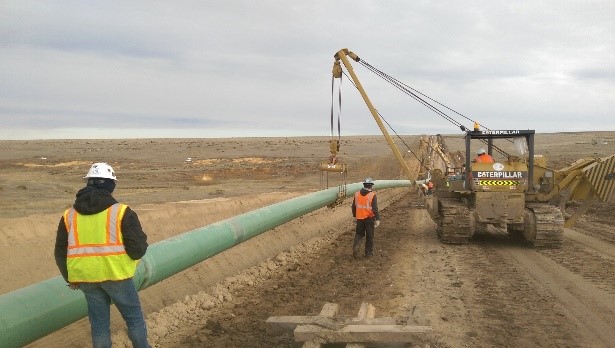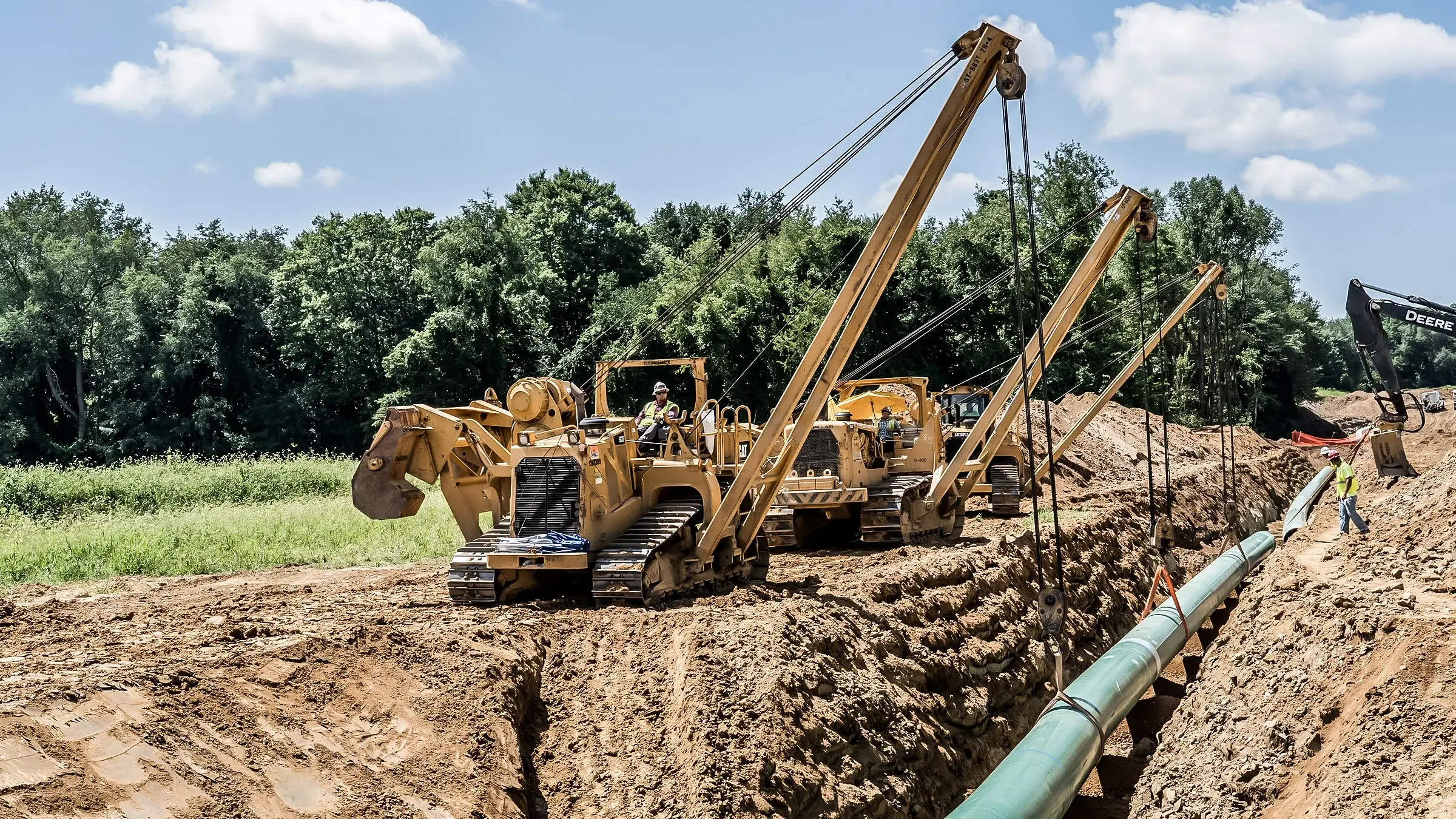Everything You Need to Know About Creek Pipe pipeline construction
Wiki Article
What You Ought To Find Out About Pipe Trenching Providers: A Detailed Overview of Available Options
Pipe trenching services are crucial for the installation and upkeep of underground utilities. They involve numerous methods customized to particular needs and environments. Understanding these techniques is vital for reliable task implementation. Each choice provides its own set of benefits and difficulties. As the need for efficient utility monitoring boosts, recognizing what to think about when choosing a trenching solution becomes vital. What variables should one focus on to ensure success?Understanding Pipe Trenching: What It Is and Why It Matters
Usually ignored, pipeline trenching is a vital process in numerous building and energy tasks. This technique entails excavating slim trenches to help with the installment of pipes for water, gas, sewer, and telecommunications. The importance of pipe trenching exists in its duty in ensuring that these crucial systems are properly integrated right into infrastructure, enabling the risk-free and reliable distribution of necessary services.Proper trenching is vital for maintaining the integrity of pipelines and lessening threats connected with dirt disintegration and collapses. It likewise allows for efficient examinations and maintenance of below ground energies. Additionally, understanding the regional guidelines and ecological considerations is vital, as improper trenching can result in costly hold-ups and lawful issues. Inevitably, pipeline trenching offers as the foundational step that sustains different construction ventures, making it a significant element of modern-day facilities development.
Common Trenching Methods for Underground Energies
In the domain of underground utilities, different trenching techniques play an essential duty in setup and maintenance - Creek Pipe Midland. The open-cut trenching technique, directional dull technique, and hydro excavation procedure each deal one-of-a-kind benefits depending on the details task demands. Understanding these approaches is vital for effective and effective energy administrationOpen-Cut Trenching Technique
Open-cut trenching is a commonly used method for mounting below ground energies, especially when the deepness and width of the trench enable for efficient gain access to. This method involves digging deep into a trench along the recommended course of the utility, providing straight presence and availability for setup. It is particularly useful for jobs that call for substantial excavation, as it helps with fast setup and evaluation. However, it additionally necessitates cautious planning to lessen interruption to the surrounding location, consisting of web traffic and existing frameworks. Open-cut trenching is most reliable in open spaces where the dirt conditions are beneficial, yet it might be restricted in metropolitan environments because of the presence of existing utilities and various other below ground barriers.Directional Boring Technique

Hydro Excavation Refine
How does hydro excavation stick out amongst common trenching methods for below ground utilities? Hydro excavation utilizes high-pressure water and vacuum modern technology to securely remove dirt, permitting for exact excavating around delicate below ground utilities. This approach lessens the danger of destructive existing infrastructure compared to conventional mechanical excavation. By employing water to loosen up the dirt, hydro excavation supplies a less invasive strategy, lowering the capacity for soil compaction and making sure a cleaner worksite. Additionally, the procedure enhances visibility during excavation, boosting general precision and efficiency. Hydro excavation is specifically advantageous in metropolitan areas where energy lines are largely loaded, making it a recommended option for contractors concentrated on safety and accuracy in below ground projects.Advantages of Trenching Services
While different approaches exist for mounting underground energies, trenching services use unique benefits that make them a preferred choice for numerous projects. One substantial benefit is the cost-effectiveness of trenching, as it generally requires much less specific devices contrasted to options like hydro excavation. This typically causes reduced labor and functional expenses. Additionally, trenching can accommodate a vast array of utility kinds, consisting of water, sewage system, and gas lines, giving convenience for contractors.Moreover, trenching enables for effective access to multiple lines in a solitary excavation, reducing disturbance to the surrounding area. The procedure likewise enables precise installment and repair, which is critical for adhering to regulative criteria and making certain lasting integrity. Inevitably, trenching can be carried out fairly rapidly, minimizing task timelines and permitting faster solution reconstruction. These advantages jointly make trenching solutions a sensible option for many below ground energy tasks.Downsides and Obstacles of Trenching
Despite the many benefits of trenching services, there are remarkable negative aspects and challenges that need to be taken into consideration. One substantial challenge is the potential for soil instability, which can lead to collapses, posing threats to workers and devices. Furthermore, trenching can interfere with existing utility lines, demanding careful preparation and control to prevent service disturbances. The procedure can likewise be taxing, especially in city locations where room is minimal and accessibility is limited. In addition, trenching might require substantial authorizations and regulative conformity, including intricacy and potential hold-ups to jobs. Ecological worries, such as dirt erosion and damage to neighborhood ecological communities, can occur from inappropriate trenching methods. The expenses connected with trenching, consisting of labor and devices, can rise if unexpected problems arise during the task, making it crucial for stakeholders to evaluate these difficulties against the advantages when considering trenching solutions.Secret Variables to Think About When Choosing a Trenching Service
Selecting the right trenching solution can greatly influence the success of a job. A number of essential factors need to be evaluated to assure an appropriate selection. The company's experience and competence in trenching procedures are vital; a well-established service with a strong track record is typically much more dependable. Next off, examining the equipment used is basic, as modern-day equipment can improve efficiency and precision. In addition, it is significant to think about the variety of services used, including excavation deepness and soil type handling, to confirm they meet specific job requirements.Another aspect to evaluation is the business's reputation; client evaluations and testimonials can provide visit the website understandings into previous performance. Getting detailed quotes that describe expenses and timelines will certainly help in budget plan management. Finally, verifying compliance with local policies and market standards is essential for avoiding prospective lawful concerns. By assessing these aspects, clients can make a notified choice when picking a trenching service.Precaution in Pipe Trenching
In pipe trenching, precaution are important to ensuring employee protection and site stability. Key elements include making use of personal safety tools, comprehensive excavation website evaluations, and well-defined emergency situation reaction procedures. Carrying out these steps significantly reduces dangers linked with trenching operations.Personal Protective Tools
Safety and security in pipeline trenching heavily counts on the proper usage of personal protective tools (PPE) Employees must put on hard hats to shield against dropping items, in addition to high-visibility vests to boost their exposure on-site. Steel-toed boots are essential for foot protection versus hefty devices and products. In addition, handwear covers are essential for hand safety and security, specifically when taking care of harsh or sharp items. Respirators may also be necessary in atmospheres with dirt or hazardous fumes. Eye security, such as safety and security goggles, ought to be put on to secure against debris. Ultimately, listening to defense is essential in noisy workplace. By adhering to PPE standards, workers can substantially lower the risk of injury and ensure a safer trenching procedure.Excavation Website Evaluation
Properly examining the excavation website is a basic action in guaranteeing a safe pipe trenching operation. This procedure involves examining the site for potential threats such as underground utilities, unsteady soil conditions, and neighboring structures. A complete evaluation enables the identification of dangers that can compromise worker security. Additionally, verifying the dirt kind and dampness degrees can aid identify suitable shoring methods to avoid trench collapses. It is essential to ensure that the site is clear of particles which appropriate signage is displayed to signal employees of continuous procedures. Routine examinations throughout the project can additionally assist find any kind of changes in website conditions, enabling timely adjustments to precaution and job protocols.
Emergency Response Protocols
Emergency action methods are crucial in mitigating dangers related to pipe trenching operations. These procedures guarantee that all employees are prepared to act swiftly and successfully in emergency situations. Crucial element include routine security drills, clear communication networks, and designated emergency exits. Additionally, first-aid packages and emergency situation call numbers need to be easily easily accessible on-site. Trenching operations need her latest blog to also include procedures for managing dangerous circumstances, such as cave-ins or utility strikes. Training employees on identifying potential hazards and understanding their roles throughout an emergency situation is vital. Maintaining an upgraded website safety plan can substantially enhance action efficiency. Overall, effective emergency preparedness cultivates a safer working environment and reduces the impact of unexpected incidents.Price Factors To Consider for Trenching Services
Understanding the economic effects of trenching services is vital for task planning and budgeting. The prices connected with trenching can differ commonly based upon a number of variables, including project dimension, soil kind, and depth of the trench. Labor costs commonly stand for a substantial portion of the complete cost, as competent operators are needed for efficient execution. Additionally, tools leasing fees can add to the overall budget, especially for specialized machinery.Site availability is an additional vital aspect; difficult terrain may demand additional sources, increasing expenses. Permitting and regulative compliance can also include to costs, particularly in city locations where policies are stringent.Lastly, unanticipated problems, such as encountering existing energies, can lead to unforeseen expenses and hold-ups. As an outcome, obtaining comprehensive quotes from respectable trenching company is vital for exact budgeting and making sure effective job completion.Regularly Asked Concerns
The length of time Does a Regular Pipe Trenching Task Take?
The duration of a typical pipeline trenching task varies significantly based upon variables such as depth, soil conditions, and task complexity. Usually, it can take anywhere from a couple of days to numerous weeks to complete.What Equipment Is Typically Used in Pipe Trenching?

Are There Environmental Regulations for Trenching Activities?
Environmental guidelines for trenching activities frequently need conformity with regional, state, and government standards. These guidelines intend to decrease ecological interruption, shield water resources, and warranty correct waste administration during excavation and installment processes.
Can Trenching Solutions Be Incorporated With Other Construction Projects?
Trenching services can undoubtedly be integrated with different building tasks. By working with initiatives, efficiencies can be accomplished, lessening interruptions while ensuring that all essential infrastructure work is completed in a prompt and cost-effective fashion.
What Prevail Soil Enters Come Across in Trenching?
Usual soil kinds encountered in trenching include clay, sand, silt, and loam. Each type offers unique difficulties, affecting excavation methods and security, demanding mindful planning to assure safe and efficient trenching operations.Report this wiki page